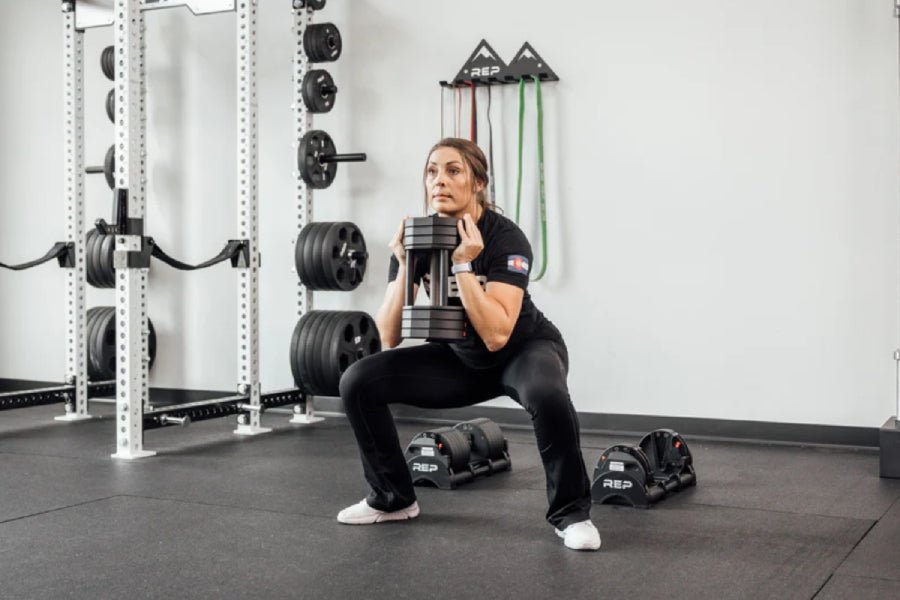Training Considerations For Pregnancy, Postpartum And Beyond
GYMSPORTZ PTE LTD | 10 Nov 2025

Maintaining physical activity during pregnancy and after childbirth can greatly benefit both mother and baby. Gentle, consistent exercise supports strength, circulation, mood, and recovery. For many women, home workouts using simple tools such as a portable treadmill make it easier to stay active safely and conveniently while adapting to new routines and energy levels. Whether you are an experienced athlete or a first-time exerciser, the key is to train with awareness and adjust your approach as your body changes.
Understanding The Physiological Changes
Pregnancy introduces a series of changes to the body that affect how you move and train. Hormones like relaxin increase flexibility in your ligaments, which can make joints more prone to strain or instability. The growing uterus shifts your centre of gravity, altering posture and placing more stress on the lower back, hips, and pelvic floor. You may also find your heart rate rises more quickly and that you tire faster during exercise.
These adaptations are natural and necessary, but they also mean your workout routine should evolve. The same exercises or intensity levels that once felt easy may now need modification. Awareness, patience, and listening to your body become essential to prevent discomfort or injury.
Training Safely During Pregnancy
It is generally recommended to stay active during pregnancy, provided that the exercise is appropriate and safe.
• Warm Up And Cool Down
Begin every session with a proper warm up that gradually increases your heart rate and mobilises your joints. End with a cool down to bring your heart rate down slowly and stretch gently to ease tension.
• Maintain A Conversational Pace
A good rule of thumb is that you should be able to speak comfortably while exercising. If you feel breathless or lightheaded, take a break and reduce the intensity.
• Modify Intensity And Impact
As your pregnancy progresses, focus on lower impact activities such as walking, swimming, or cycling using low-impact equipment. Avoid exercises that involve lying flat on your back for long periods or movements that cause discomfort in the abdomen.
• Strength Work With Caution
Strength training can help maintain posture and stability, but heavy lifting should be replaced with lighter weights and controlled movements. Focus on your back, glutes, and core, as these muscles help support your changing body. Avoid twisting or jerky actions that may put unnecessary strain on your spine or abdomen.
• Core And Pelvic Floor Engagement
Pelvic floor exercises are especially valuable during pregnancy. Gentle activations and breathing exercises strengthen the muscles that support your bladder, uterus, and bowels. Be cautious with traditional ab exercises if you notice bulging or pressure along the midline of your belly.
• Monitor Warning Signs
Always listen to your body. Stop exercising and seek medical advice if you experience bleeding, dizziness, pain, contractions, or unusual fatigue.
Recovery And Return To Exercise Postpartum
After childbirth, your body needs time to heal before returning to higher intensity workouts. The rate of recovery varies from person to person, depending on the type of delivery and individual circumstances.
• Phase One: Immediate Postpartum (Weeks 0–6)
In the early weeks, rest and gentle movement are key. Breathing exercises, pelvic tilts, and light walking can encourage circulation and aid recovery. If you had a caesarean birth, recovery will take longer and you should avoid heavy lifting or strong abdominal work until cleared by your doctor.
• Phase Two: Early Return (Weeks 6–12)
Once you have medical clearance, you can gradually add light activities such as walking, swimming, or bodyweight exercises. Focus on posture, core stability, and regaining balance. It is important not to rush into high-impact training like running or jumping during this period.
• Phase Three: Building Strength And Endurance (Months 3 And Beyond)
After three months or when you feel comfortable and symptom-free, you can begin increasing intensity. Incorporate resistance training, light jogging, or dynamic movements at a pace that feels right for your body. Always pay attention to how your pelvic floor and core respond. Any heaviness, pain, or leakage should be addressed before progressing further.
Training Beyond Postpartum: Long-Term Considerations
Once you have rebuilt your strength and stability, your long-term training can focus on maintaining balance between endurance, power, and mobility.
• Core Resilience Over Appearance
The goal should be functional strength, not just aesthetics. Concentrate on deep core activation, posture, and breathing to improve overall stability.
• Monitor Pelvic Health
Even months or years after childbirth, pelvic floor weakness or discomfort can persist if left unaddressed. Seek guidance from a pelvic health specialist if symptoms continue.
• Gradual Progression
Introduce more demanding workouts slowly. Structured periods of load and recovery help prevent overtraining and ensure continued improvement.
• Mobility And Flexibility
As your joints remain slightly more mobile after pregnancy, be cautious not to overstretch. Controlled, active flexibility work is safer and more effective.
• Variety For Motivation
Combining strength training, cardio, and mobility exercises keeps workouts engaging and well-rounded. A mix of activities supports total-body fitness and prevents boredom.
Integrating Practical Strategies
Finding time to exercise while caring for a baby can be challenging, so practicality matters more than perfection.
• Choose simple equipment such as resistance bands, light dumbbells, or a portable treadmill for low-impact cardio at home.
• Try short, frequent workouts of 10–15 minutes if longer sessions are not possible. Small bursts of effort add up over time.
• Involve your baby in your routine where possible; gentle stroller walks or baby-friendly exercise classes are good ways to stay active together.
• Prioritise rest, nutrition, and hydration. Recovery is as important as movement.
• Communicate with your partner or family for support and schedule time for self-care.
Conclusion
Training through pregnancy, postpartum, and beyond is not about chasing pre-baby fitness levels quickly. It is about respecting your body, progressing safely, and finding joy in movement again. Whether you are walking gently on a portable treadmill during recovery or regaining strength through regular resistance training, consistency and patience are key.
For trusted home fitness solutions and equipment designed to support your health journey, visit Gymsportz. With a wide selection of quality gear and expert advice, you can build a sustainable routine that grows with you through every stage of motherhood.







